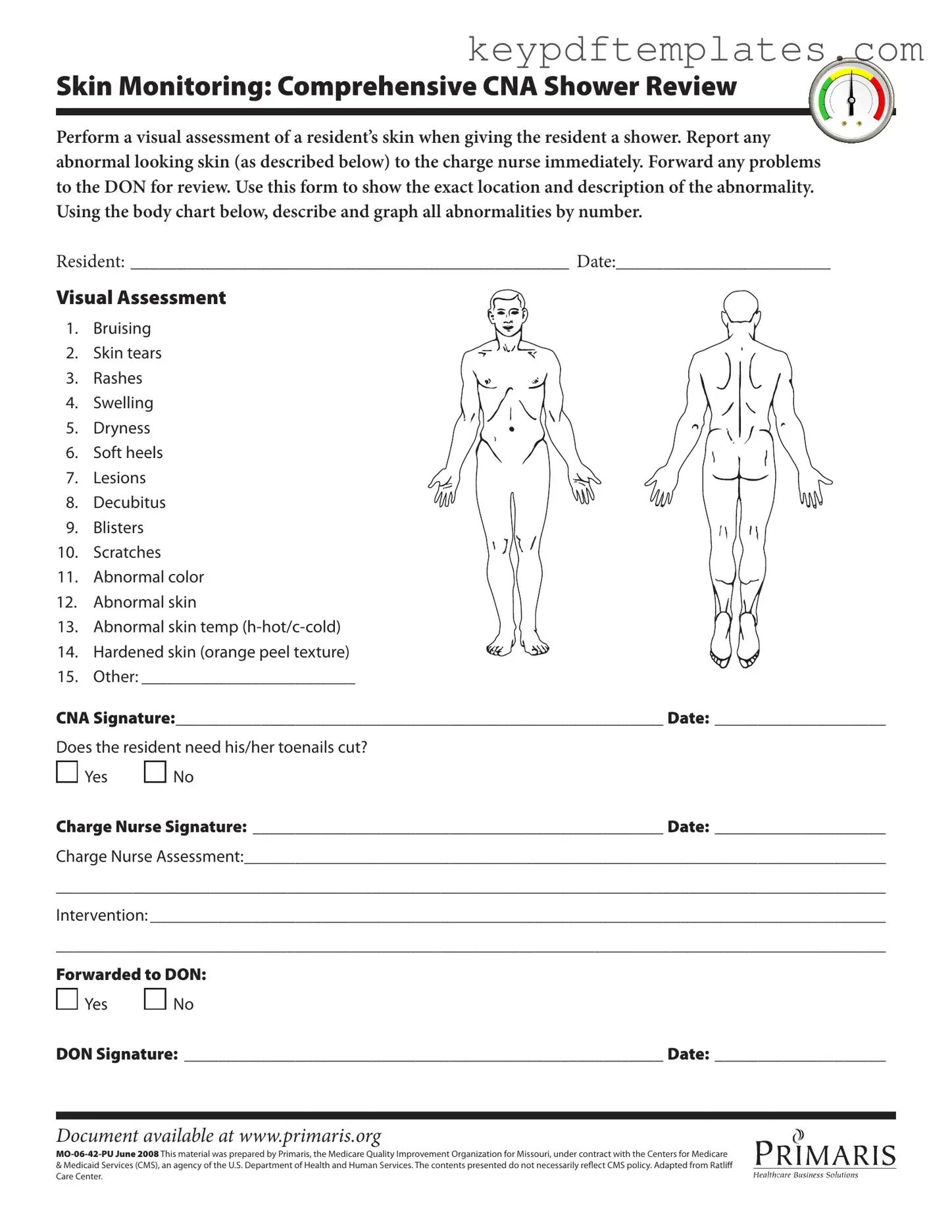Get Cna Shower Sheets Form
The CNA Shower Sheets form is a vital tool used by certified nursing assistants to document skin assessments during resident showers. This form facilitates thorough monitoring of skin conditions, allowing for immediate reporting of any abnormalities to nursing staff. By systematically recording observations, CNAs play a crucial role in ensuring the health and safety of residents.
Modify Document Online
